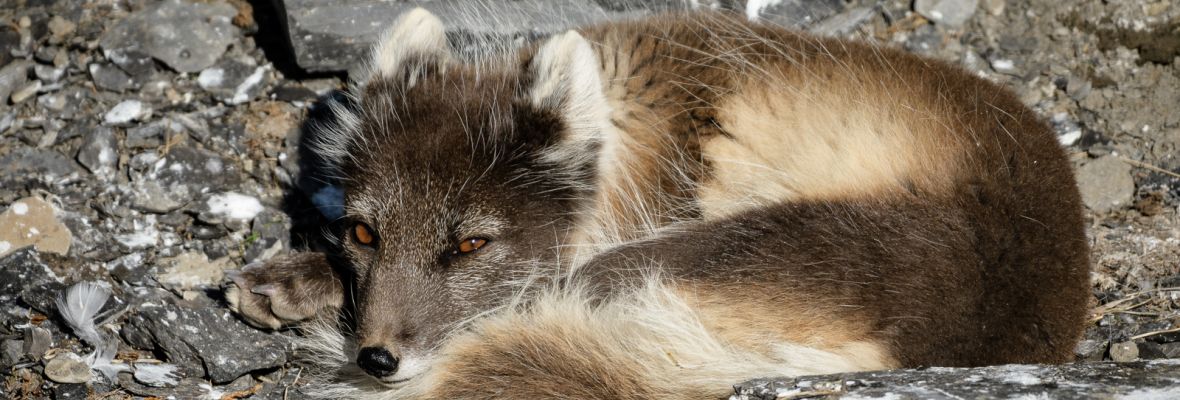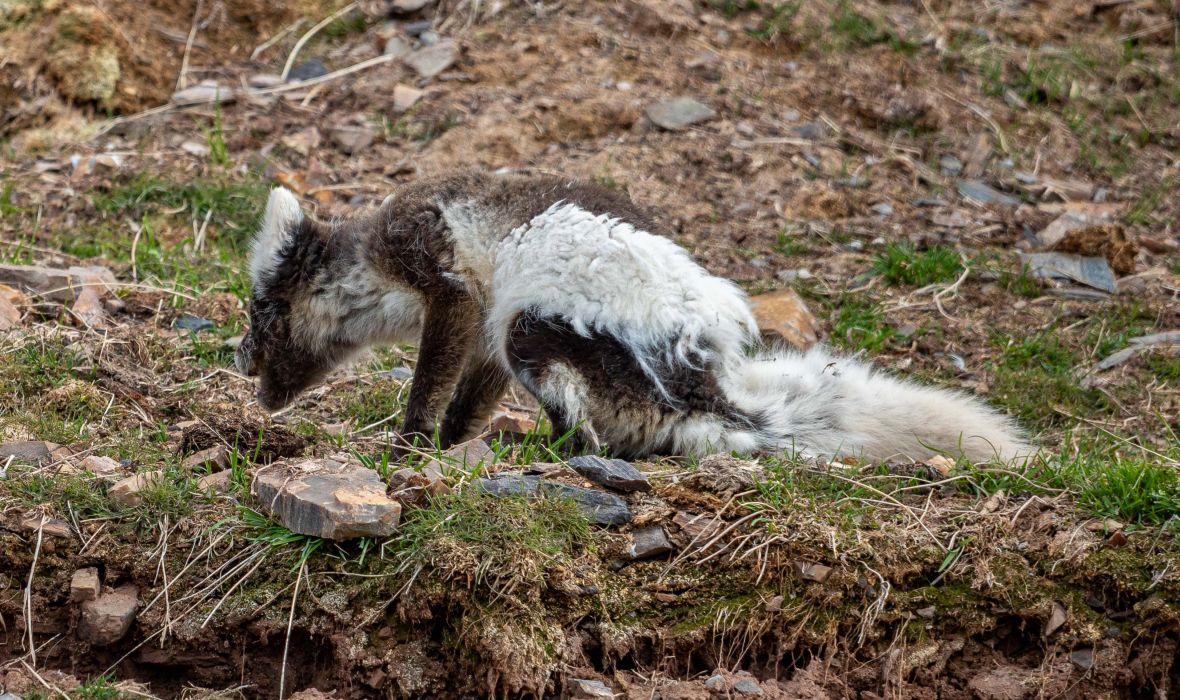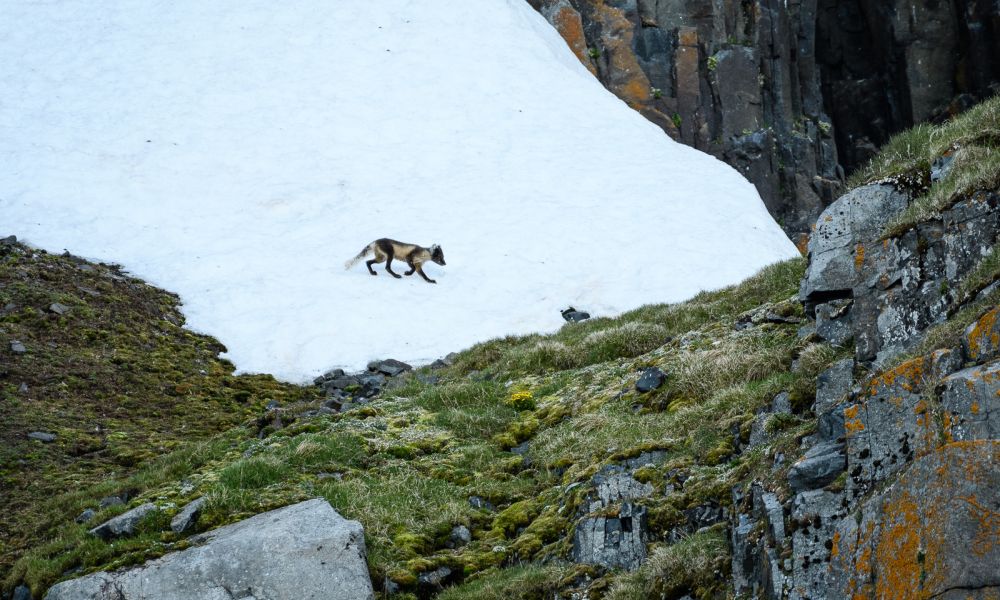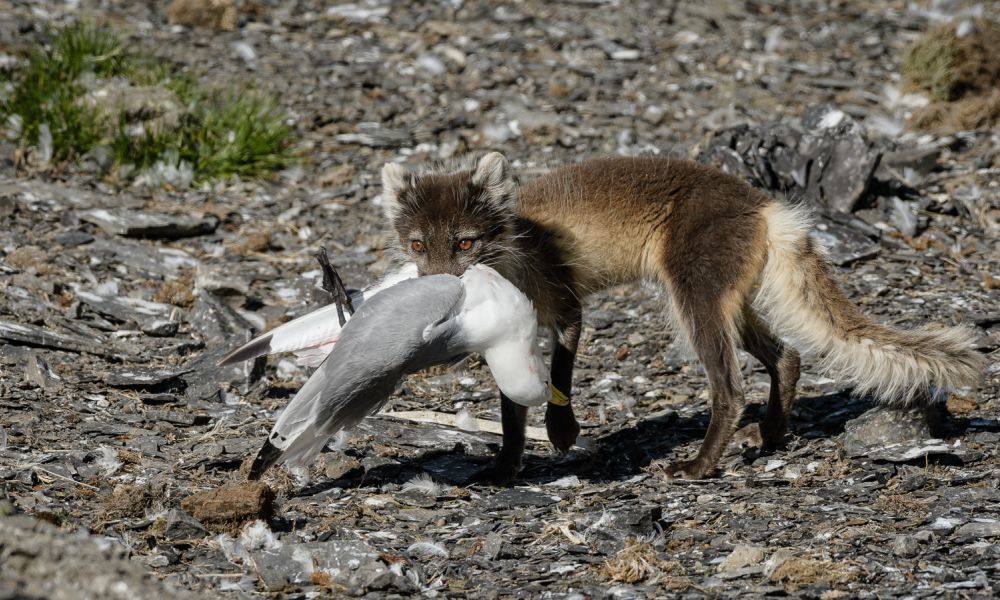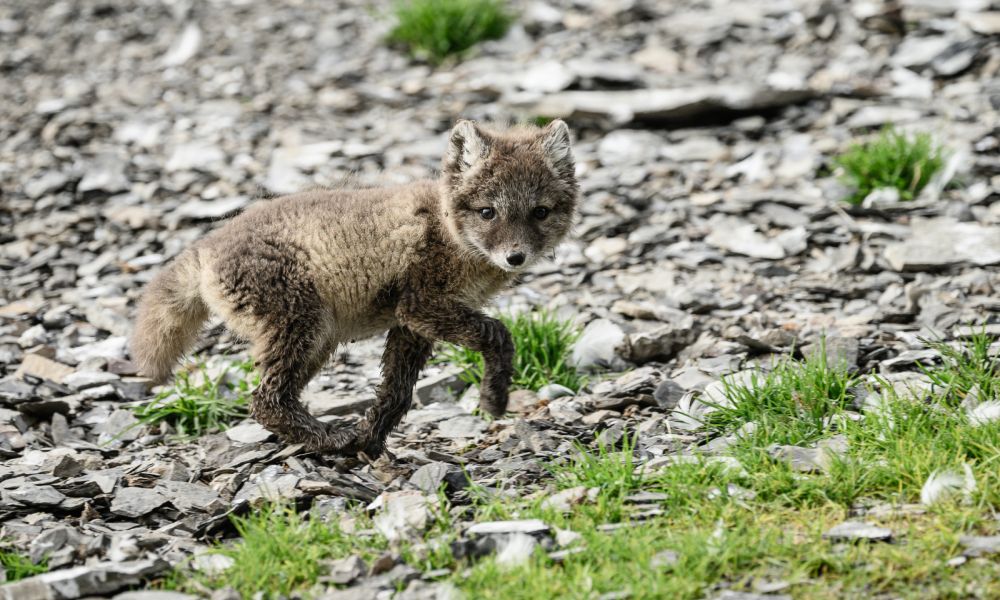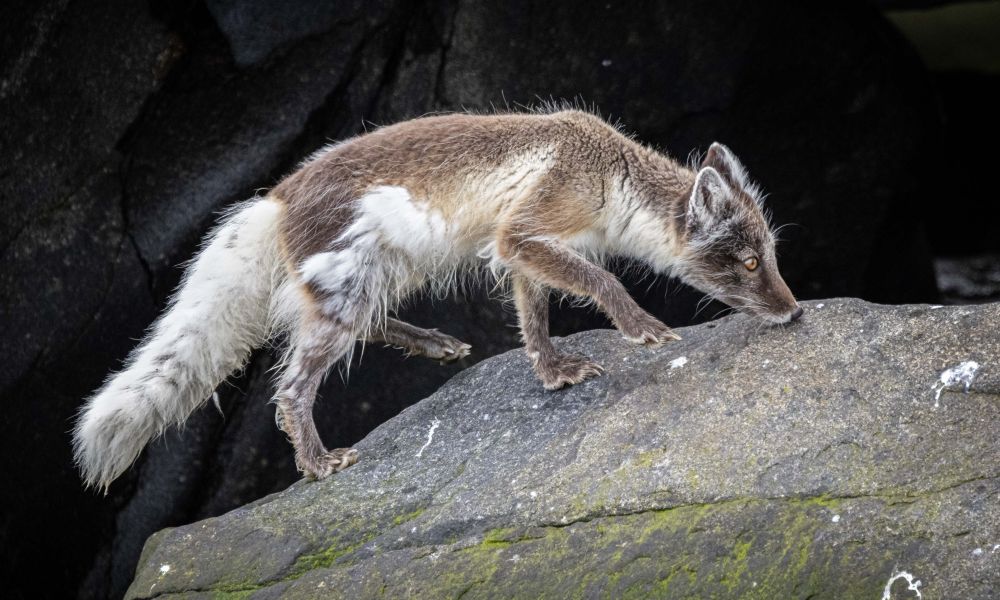How Does Their Colouring Serve as a Defence Against Predators?
Arctic foxes, also known as snow foxes, polar foxes, or blue arctic foxes, can change their fur colour twice a year to protect themselves from predators. During the frigid winter months, their fur colors turn pristine white, providing camouflage against the snow-covered landscape. As summer approaches, the fox sheds its winter coat and dons a mottled brown or grey fur, blending seamlessly with the rocky tundra. Their ability to change color is a crucial survival strategy, helping these animals evade predators like polar bears, wolves, golden eagles, and humans. Humans have hunted these foxes for centuries for their luxurious fur, particularly the rare blue-grey variety.
Why Is Their Size Ideal for Survival in the Arctic Environment?
Despite its incredible adaptability, the blue fox size is relatively small, perfectly proportioned for its hostile environment. Measuring around 60 cm in body length and weighing 2.5 to 5 kg, it's significantly smaller than its red fox relative. Its short snout, rounded ears, and compact body minimise heat loss, making it well-suited for the frigid Arctic region's climate. Their tail, which is about 33 cm long, helps maintain balance and is also used as a blanket to warm them during sleep.
To thrive in this harsh environment, the snow fox coexists with a diverse range of other wildlife, each with unique sizes and lifestyles. Here are a few examples of creatures that have adapted to the Arctic regions environment:
- Long-tailed Jaeger: Predatory birds weighing around 0.5 kg, soar through the Arctic skies.
- Arctic Hare: Smaller than foxes, these fluffy creatures weigh around 2-5 kg.
- Svalbard Reindeer: Majestic arctic tundra animal weighing up to 90 kg.
- Beluga Whale: Large marine mammals can weigh over 1,600 kg.
What Makes the Life of Arctic Foxes Unique?
While these arctic animals are often solitary hunters, they form strong family bonds during the breeding season. They are monogamous animals, often forming lifelong pairs. The male arctic fox, called a ‘dog’, forms a pair bond with a female, known as a ‘vixen’. These foxes give birth to litters of ‘kits’ who reach maturity after nine to ten months.
What is the Average Lifespan of an Arctic fox?
The Arctic fox's lifespan is relatively short, with an average life expectancy of around 3-4 years in the wild. However, some may live up to 10 years.
What Do They Eat?
The blue arctic fox's diet varies depending on food availability, seasonal changes, and social interactions. In winter, they adapt their hunting methods to survive food scarcity as opportunistic feeders by scavenging, whereas in summer, they hunt a variety of prey, including lemmings, birds, and fish.
What Is Their Greatest Threat?
The primary dangers to snow arctic foxes are scarcity of prey, climate change, habitat destruction, and human activities.
Is an Arctic Fox a Producer or a Consumer?
An arctic fox is a consumer. It relies on other organisms for food, making it a part of the consumer level in the food chain.
Do Arctic Foxes Live In Antarctica?
No, arctic foxes are native to the Arctic region and do not inhabit Antarctica.



